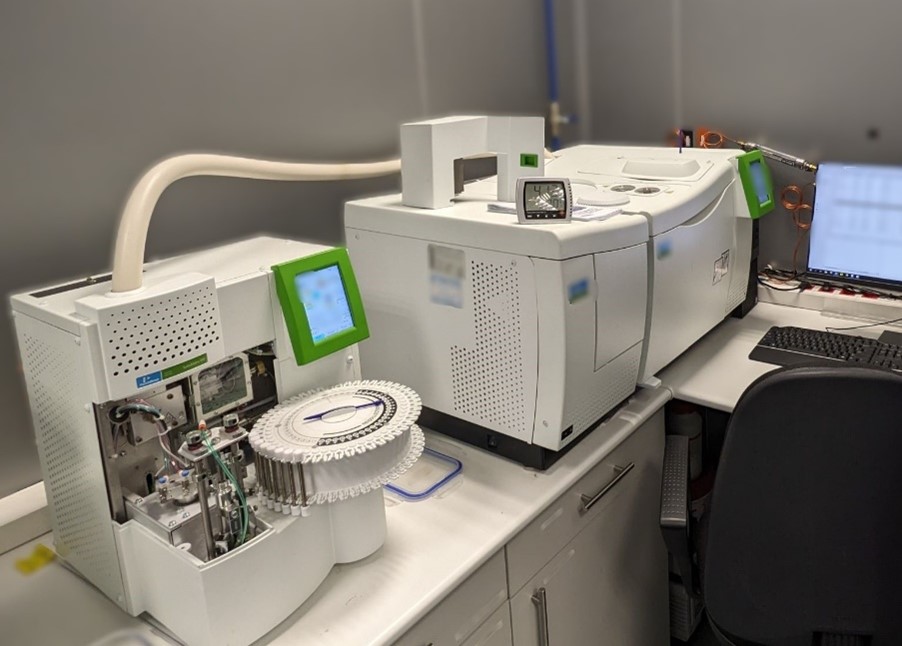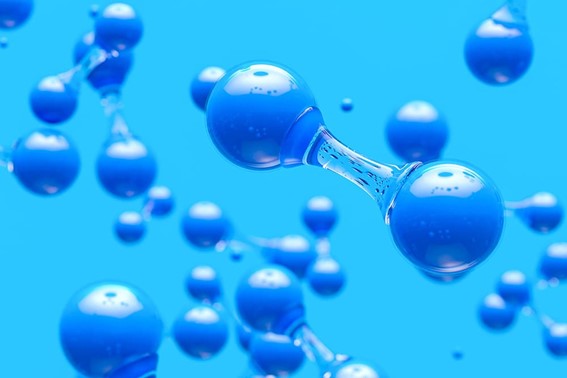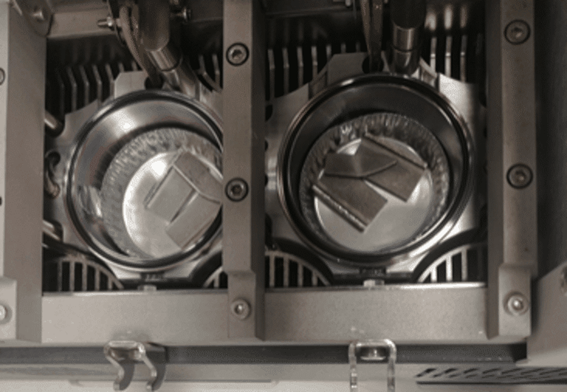What is a Gas Chromatograph?
The gas chromatograph (GC) is an analytical equipment used in research and quality control laboratories to separate, identify and quantify the components of a sample in a gaseous or vaporised state.
This method is based on the volatilisation of the compounds and their subsequent passage through a chromatographic column, where the separation of each component takes place. Throughout this process, the carrier gas, usually helium or nitrogen, transports the compounds through the column, while the detectors register the signals corresponding to each separate component.
The result of this analysis is a chromatogram, a graph showing peaks corresponding to each substance present in the sample, allowing precise analysis of the compounds.
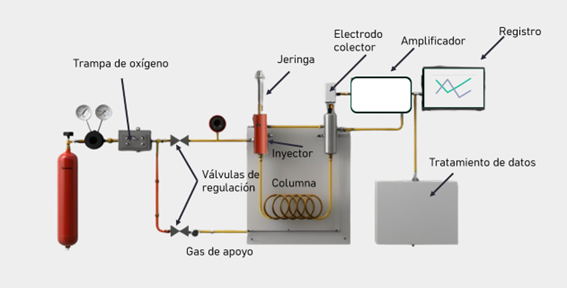
How does the gas chromatograph work?
The operation of the gas chromatograph is divided into several key stages: sample injection, vaporisation, separation of the compounds on the column and detection.
The sample is introduced into the system through an injector, where it is heated until it becomes a gas, facilitating its movement through the column. At this point, the different components of the sample interact with the column coating in a variable manner, resulting in their separation according to their affinity to the coating and their boiling points. Each component elutes from the column at different times and reaches the detector, which generates a peak in the chromatogram.
This method is extremely efficient for complex samples and is capable of detecting compounds at very low concentrations, making it an indispensable tool for the analysis of chemical and biological products.
The interpretation of the results on a gas chromatograph is a detailed process involving the analysis of the peaks present in the chromatogram. Each peak represents a specific component of the sample, and its position and size on the graph provide valuable information about the identity and quantity of that component.
The basic steps in interpreting a chromatogram include identification of the peaks, which is done by comparing the retention times with those of known standards. In addition, the areas under the peaks are quantified, which allows the concentration of each compound in the sample to be determined. In many laboratories, gas chromatography systems are integrated with analytical software, allowing automation of data processing and ensuring greater accuracy and repeatability of results.
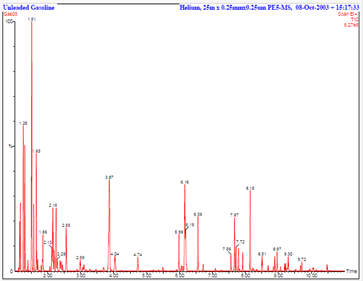
Benefits of the gas chromatograph
One of the main benefits of the optical microscope is its high image quality and ability to adapt to various observation configurations. This allows its use in a wide range of scientific applications, from the analysis of microorganisms to the study of complex materials.
The ability to customize the equipment according to the user’s needs significantly increases its functionality, making the microscope suitable for both routine studies and specialized research.
Gas Chromatograph Equipment
A key benefit of the gas chromatograph is its ability to analyse volatile and semi-volatile compounds in a variety of matrices, including gases, liquids and solids.
This feature makes it an extremely versatile analytical tool, allowing samples of different natures to be studied in a variety of industries, from food to environmental.
In addition, the equipment is highly sensitive, which facilitates the detection of compounds in very low concentrations, making it ideal for monitoring contaminants and identifying substances present in trace concentrations.
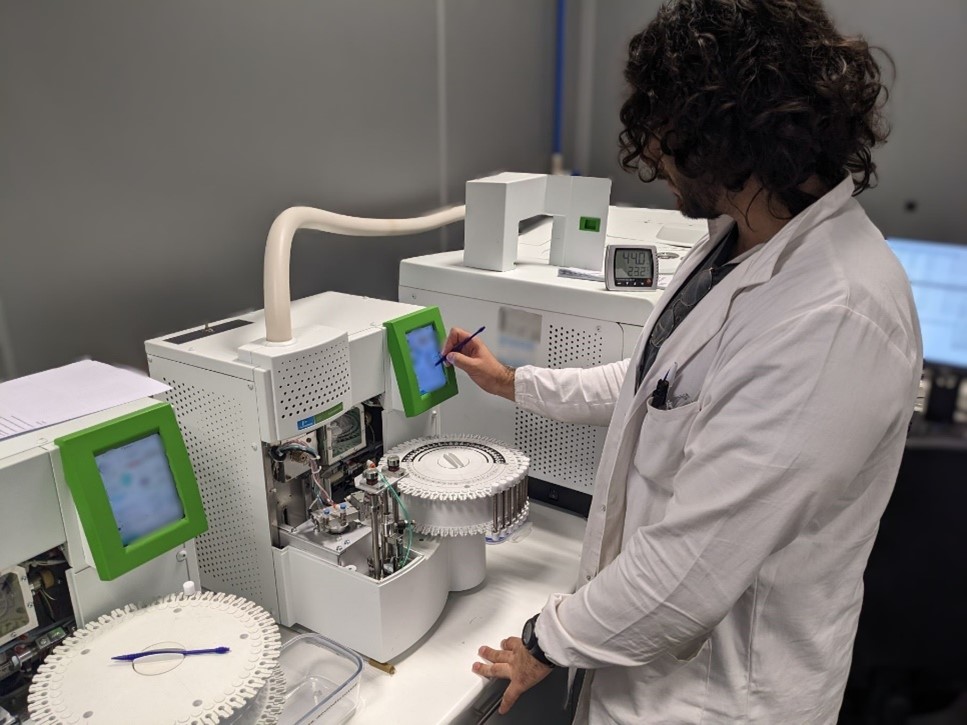
Applications of the equipment
The gas chromatograph (GC) is widely used in a variety of industrial and research sectors, as it allows a wide range of compounds to be analysed and their behaviour to be studied under different conditions.
Thanks to its high precision and analysis capacity, this equipment is an indispensable tool in fields that require the detailed analysis of complex samples.
The following are some of its most relevant applications:
- Analysis of volatile substances ( or odours): One of the main uses of the gas chromatograph is the identification and quantification of volatile substances, such as volatile organic compounds (VOCs) and other components that generate odours. This analysis is essential in the food industry, where it is used to study aromas and ensure product quality, and in the environmental sector, where it can detect the presence of volatile compounds that may be pollutants in the air or in soil and water samples.
- Analysis of gases, liquids and solids: The gas chromatograph is a versatile instrument that can analyse different types of matrices, including gases, liquids and solids. This capability makes it a key tool in quality control laboratories and in scientific research, where it is necessary to study how compounds interact in various phases. In the petrochemical industry, for example, the gas chromatograph is used to study the composition of industrial gases, while in pharmaceutical research it is used to analyse substances in liquid solutions.
- Chemical characterisation (analysis of unknown samples, concentration, reaction and process monitoring): Another fundamental application of this equipment is the characterisation of chemical samples, which includes the analysis of unknown compounds, the determination of concentrations and the monitoring of chemical reactions and industrial processes. This type of analysis is crucial in new product development and process control, as it allows the identification of the components of a sample and the monitoring of their evolution during a reaction. In the field of forensic engineering, for example, the gas chromatograph is an essential tool for residue analysis and identification of unknown substances, and failure analysis.
- Quality monitoring in the pharmaceutical industry: In the production of pharmaceutical products, the gas chromatograph is essential to ensure that active compounds and excipients meet purity and quality standards. This equipment can detect the presence of impurities and contaminants in products, which is essential to ensure the safety and efficacy of medicines, or other materials. In addition, process monitoring in drug production is critical to ensure batch consistency and quality, and the gas chromatograph facilitates this task by providing accurate analysis.
- Environmental analysis: The gas chromatograph is also widely used in environmental analysis, where it is an essential tool for the detection of contaminants in air, water and soil. This equipment makes it possible to study the presence of pesticides, volatile organic compounds and other pollutants that may have negative effects on the environment and human health. Thanks to its high sensitivity, the gas chromatograph is able to detect compounds in very low concentrations, which is essential for monitoring air and water quality in industrial and urban areas.
- Food industry: In the food industry, the gas chromatograph is used to analyse the composition of products, identify aromas and flavours, and detect possible contaminants. This equipment helps to ensure food quality and safety by facilitating the identification of substances that could alter taste or pose a health risk. In addition, the analysis of volatile components is essential to maintain consistency in product quality, as it helps manufacturers to ensure that food products comply with standards and regulations.
In conclusion, the gas chromatograph (GC) is an advanced and versatile tool that plays a key role in many sectors, from scientific research to quality control in industry. Its ability to analyse compounds in different matrices and its high sensitivity make it essential for the detailed and accurate analysis of volatile and semi-volatile substances. At Infinitia, the Perkin Elmer Clarus 680/SQ8-T GC/MS is used in a wide range of studies and applications, providing highly accurate results that contribute to the advancement of research and the development of safe, quality products.
Here are some examples of the use of GC/MS at INFINITIA:

